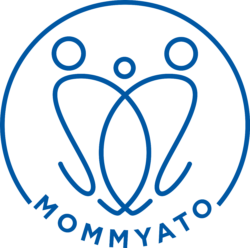27 Mar Preparing for Your Baby with Down Syndrome
1/700 babies are born with Down Syndrome in the United States.²
March 21st was World Down Syndrome Day; a special day marked to bring awareness to the joys and unique challenges of raising a child with Down Syndrome. The date of the 21st is chosen because the genetic disorder is characterized by an extra copy of chromosome 21; also called Trisomy 21.
There are different types of Down Syndrome and also degrees to which it affects a child’s appearance and development. Many children with Down Syndrome share distinct facial and bodily features. Their facial structure may be flatter, with smaller ears, hands and feet. They often have shorter necks and height, as well as lower muscle tone.
A baby with low muscle tone will need special handling, as she might feel “floppy” in your hands. When positioning her, take hold of her arms and shoulders, and be sure to support her head. Low tone becomes an issue when using a carseat. He may not be able to keep his airway open because of the angle of the carseat and may need a special car seat or “car bed”. Before you leave the hospital, the medical team will test the baby’s breathing in the car seat to make sure it is safe.
You can expect a longer hospital stay if your baby is born with Down Syndrome. This condition is often associated with heart defects (almost 50% are born with a congenital heart defect) and thyroid disorders. Thyroid disorders in babies can lead to problems with growth and development as well as hearing loss. The medical team will take blood and conduct newborn tests including imaging to test for thyroid and heart problems.
Many families report a high level of satisfaction in raising their children with Down Syndrome. You can expect more medical appointments soon after birth, as well as development delays in common milestones like crawling, walking and speaking. However, with quality medical intervention and supportive therapies, people with Down Syndrome go on to live full and productive lives. The life expectancy for people with Down Syndrome has increased dramatically over the last decades.
Down Syndrome affects all races, genders, and economic levels. There is no known cause, but research shows that the likelihood of giving birth to a baby with Down Syndrome increases with maternal age. Prenatal screening is available.
For more resources, check out the National Down Syndrome Society and the National Down Syndrome Congress. If you know you’re having a baby with Down Syndrome, be sure to create your support system. Connect with parents and organizations who are going through the same journey and can offer the love, support and resources you need.
REFERENCES:
- Centers for Disease Control (CDC). December 2022. Data and statistics on down syndrome. https://www.cdc.gov/ncbddd/birthdefects/downsyndrome/data.html
- National Down Syndrome Society (NDSS). 2023. Facts, myths, and truths about down syndrome. https://ndss.org/myths-truths
- Photo by Kampus Production: Parent With Curly Hair Playing With Her Baby. https://www.pexels.com/photo/photo-of-a-parent-with-curly-hair-playing-with-her-baby-6249949/



